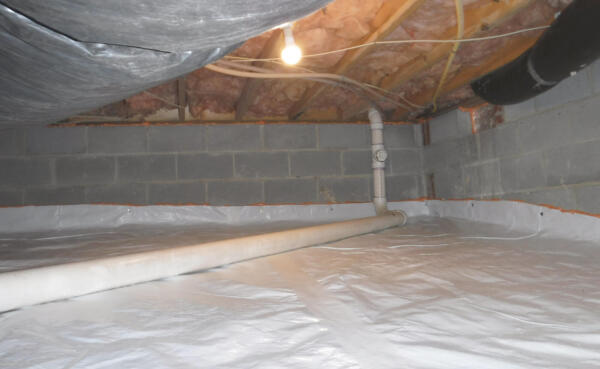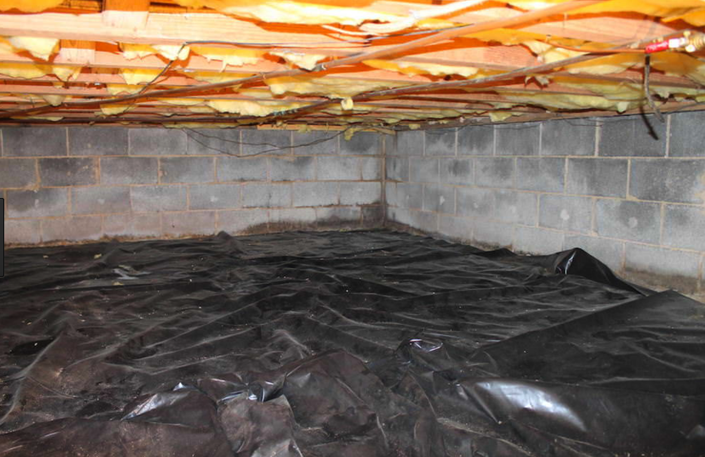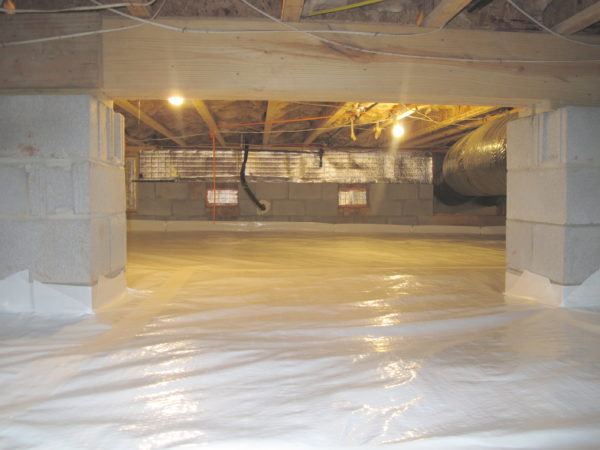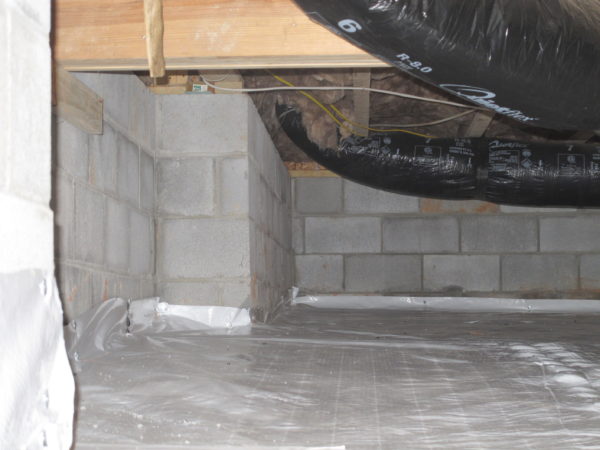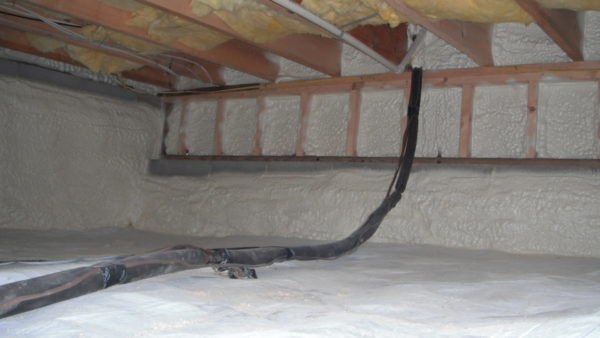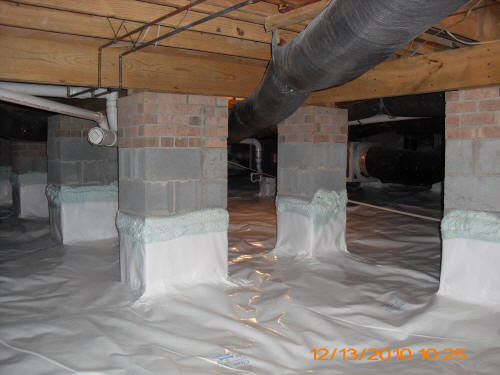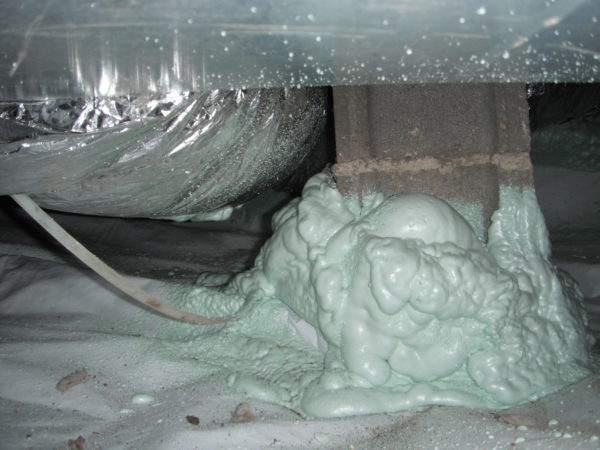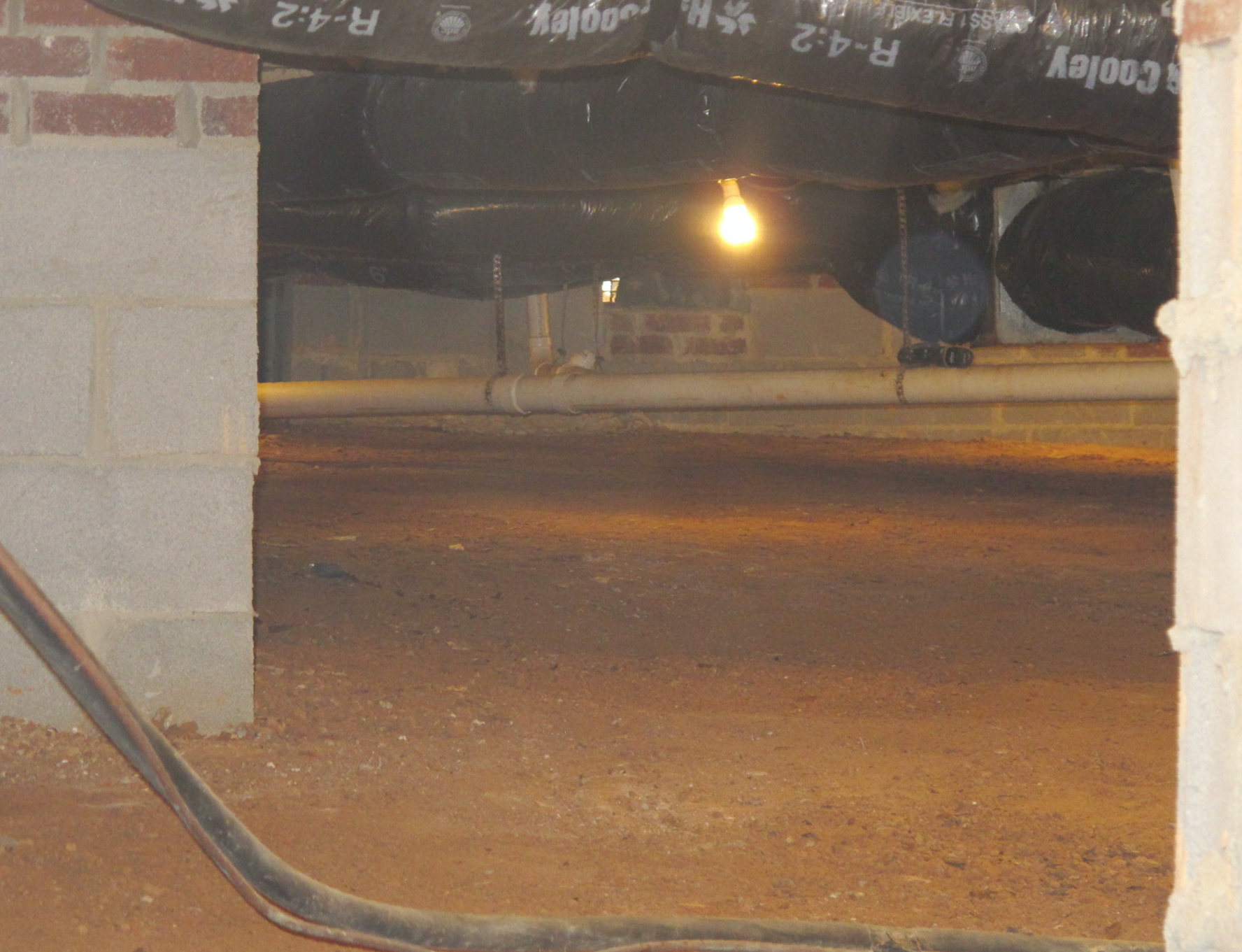Sealed Vapor Barrier
This is the standard vapor barrier treatment offered by Stetten Home Services: 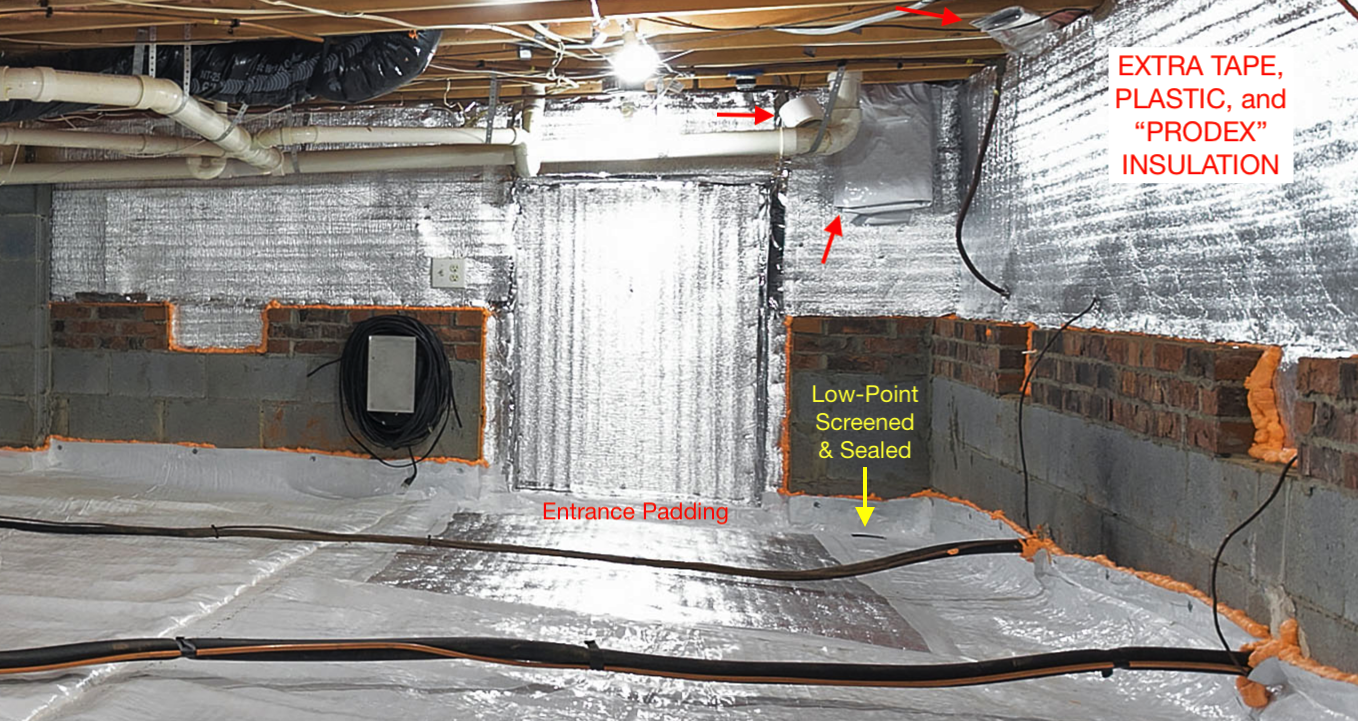 As you can see we provide extra materials and do an excellent job. The 1/4″ reflective insulation we use for air-barriers, house-wrap, padding, door-gaskets, is now called “Solex” and it has peel and stick adhesive on one of the edges. 4×125 is how the roll comes.
As you can see we provide extra materials and do an excellent job. The 1/4″ reflective insulation we use for air-barriers, house-wrap, padding, door-gaskets, is now called “Solex” and it has peel and stick adhesive on one of the edges. 4×125 is how the roll comes.
It may not appear that the vapor barrier is glued or foamed to the wall, but we seal it with foam or glue and nails as needed. Sometimes we use stretch-wrap to get a good “grab” on the piers.

The home above was spray-foamed from the ground to about 3″ from the top of the masonry wall and more foam was applied to the band-joist. In this case we did not tediously foam the vapor barrier to the wall and allowed the insulators to cover it up.

Even if you have a vented crawlspace you want a “sealed” vapor barrier. If the ground looks dry under the vapor barrier the moisture escaped, and we have been into enough crawlspace to know that the wetness is often seasonal or constant. The optimal situation is for the soil saturation to be constant. The ground and the foundation can handle being placed in wet soils.
For several reasons, being able to see a foundation wall is good. These photos depict our standard vapor barrier which goes up the walls ~4″, like a baseboard, and without sealant, the way we do it, it is stopping an estimated 98% of the moisture in the earth from escaping upwards, and then it is sealed to the walls with foam that comes out of a small gun, and to the piers with tape and foam as needed.
Other folks run the vapor barrier all the way up the wall, which we have done in the past, and may do in the future if someone wants it, but we are not impressed with that approach as a standard vapor barrier installation. If you are going to cover the block wall up with a building material, you might as well use some form of insulation that is itself a “vapor-barrier”. If a wall is visibly wet or wet to the touch, then maybe it makes sense to run the vapor barrier up above that point, but really there is a need for exterior water management, and maintaining visibility of that detail means you can verify your resolution.
Our preference when no insulation is existing and we must satisfy a code insulation requirement is 1.5″ to 2″ of closed cell spray foam on the perimeter of the crawlspace including the band-joist cavities and framed wall cavities. This is often cheaper than fiberglass batts in the floor system because the footage is drastically lower. For example we just foamed a crawlspace that was 1000SF with 400SF of closed cell foam applied to the perimeter and that foam is guaranteed for life. Even though we make less money, in existing home crawlspace work we prefer not to install any additional insulation and to watch the wireless crawlspace monitor to determine that the moisture problem has been solved before we proceed with spending more time and money.
We consistently find that when you install a Bare-Minimum-Sealed-Crawlspace that has “excellent moisture performance” aka “no risk zone” on our chart for 50 weeks per year, it also has excellent thermal performance.
In low-flat crawlspaces where the ratio of heated square footage to foundation wall square footage is higher, the annual low for a sealed crawlspace with no perimeter insulation is about 65F while the annual high is a mere 72F. In larger crawlspaces with pony walls sometimes the ratio is lower and the temperature swings from 63F to 75F which is still terrific compared to a vented crawlspace foundation, and the solution to pollution is dilution, and it also appear more voluminous crawlspaces have lower humidity once they are sealed because whatever moisture gets inside is diluted among more air. The thermal performance of a sealed crawlspace, regardless as to the presence of any insulation is terrific as long as there is ductwork down there that can be used to supply a trickle of air to the space or just some thermal loss that can be retained in the space. We say this because a crawlspace with no ductwork may end up with a dehumidifier which belches out waste heat and has a short life-span which can kill the economic performance of the crawlspace.
The more air-tight you get a crawlspace the more energy you save, and the more comfortable you will be.
The more air-tight you get it, the easier it is to maintain a steady, low, relative humidity, and the harder it is for bugs to get inside and make a mess.
In the above photo the existing yellow fiberglass insulation was fine, but we folded it back 16″ to allow the spray-foam technician to get a clear shot at each band-joist cavity. You can see the termite inspection viewing gap at the top of the block wall.
If we are going to apply an unnecessary level of Industrial Engineering to this work we would notice that if the spray foam is used the foam and glue behind the vapor barrier is redundant and you may as well seal the vapor barrier to the piers with the spray foam too:
How does Stetten Home Services get crawlspaces to look so flat and so smooth.
With rakes, shovels, hoes, pick-axes, tubs, and hard work:
We often see crawlspaces where literally zero prep was done before laying the plastic and it simply doesn’t last or perform very well, and it sucks when you kneel on a rock or brick. We often use saws to trim roots and fill mole holes with rocks and bad-tasting foam.
